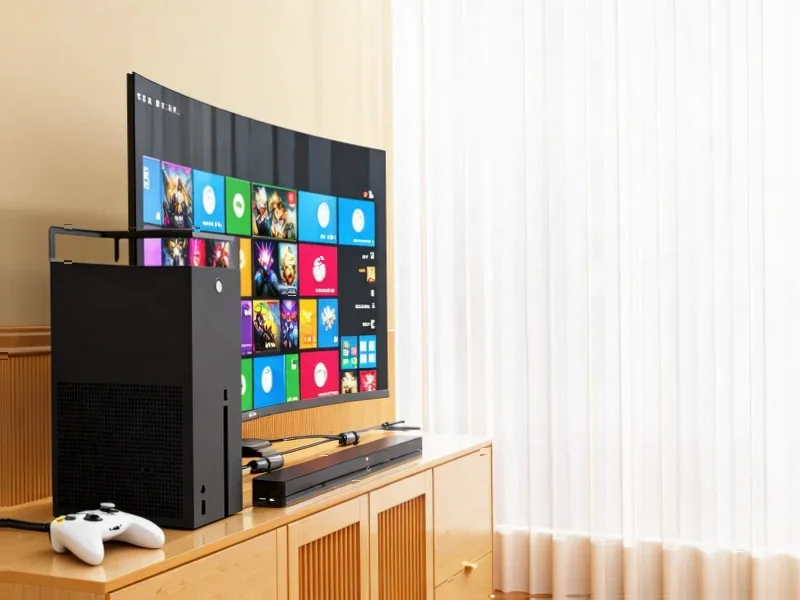According to KitGuru.net, the October 2025 Steam hardware and software survey reveals Linux gaming has surpassed the 3% threshold for the first time, reaching 3.05% with a 0.41% monthly increase. Windows saw its largest recent decline, dropping 0.75 percentage points to 94.84%, while macOS gained 0.34% to reach 2.11%. The Steam Deck running SteamOS Holo remains the primary driver, accounting for 27.18% of Linux users and consistently ranking among Steam’s top 10 global sellers. Significant fragmentation exists across other Linux distributions, with Arch Linux at 10.32%, Linux Mint 22.2 at 6.65%, and gaming-focused CachyOS at 6.01%. This data suggests a broader industry shift that extends beyond simple platform preferences.
The Beginning of Platform Diversification
Crossing the 3% threshold represents more than just a statistical milestone—it signals the beginning of meaningful platform diversification in PC gaming. For years, the Steam hardware survey has shown near-total Windows dominance, but we’re now seeing the first cracks in that foundation. While 3% might seem modest, it represents millions of active users and creates a viable market for developers to target. The timing coincides perfectly with Windows 10’s end-of-support period, suggesting many users are making conscious decisions about their next gaming platform rather than automatically upgrading to Windows 11.
Valve’s Masterstroke in Hardware Strategy
Valve’s Steam Deck represents one of the most successful strategic plays in gaming hardware history. By creating a compelling hardware experience tied to their Linux-based SteamOS, they’ve effectively built an ecosystem that benefits their platform regardless of where users play. The GamingOnLinux Steam Tracker data showing Steam Deck accounting for over a quarter of Linux usage demonstrates how hardware can drive software platform adoption. This creates a virtuous cycle: more Linux users mean more developer attention, which improves the experience for all Linux gamers, including desktop users who benefit from Proton compatibility improvements driven by Deck optimization.
The Coming Developer Reckoning
We’re approaching a tipping point where game developers can no longer afford to treat Linux as an afterthought. With an installed base likely exceeding 4 million active users—and growing rapidly thanks to continued Steam Deck sales—the financial incentive for native Linux support or robust Proton compatibility is becoming undeniable. We’re already seeing middleware companies and engine developers prioritizing Linux compatibility, and this trend will accelerate as the user base expands. The fragmentation shown in the survey, while currently a challenge, also represents opportunity for tools and services that can streamline cross-platform development and deployment.
Windows Response and Market Dynamics
Microsoft faces a strategic dilemma. While Windows gaming revenue remains substantial, the platform’s slight decline in the face of Linux growth suggests user dissatisfaction with their gaming direction. The Windows 11 adoption rate among gamers has been slower than expected, and the increasing hardware requirements have pushed some users toward alternatives. Microsoft may need to reconsider their gaming strategy, potentially offering more gamer-friendly Windows SKUs or improving compatibility layer support. The emergence of specialized gaming distributions like Bazzite and the appearance of Flatpak runtimes in the survey data indicate a growing sophistication in the Linux gaming ecosystem that could further erode Windows’ dominance in specific gaming segments.
Beyond the Numbers: What Comes Next
The real story isn’t just the current 3%—it’s the growth trajectory and what it enables. As the Linux gaming community continues to grow through initiatives like the GamingOnLinux Patreon and other community efforts, we’re likely to see increased investment in gaming-focused Linux distributions and compatibility tools. The next critical threshold will be 5%, which would represent a large enough market to make Linux-first or Linux-exclusive game development financially viable for mid-sized studios. We’re also likely to see hardware manufacturers paying closer attention, with more pre-built gaming PCs offering Linux options and peripheral manufacturers ensuring day-one Linux driver support.




